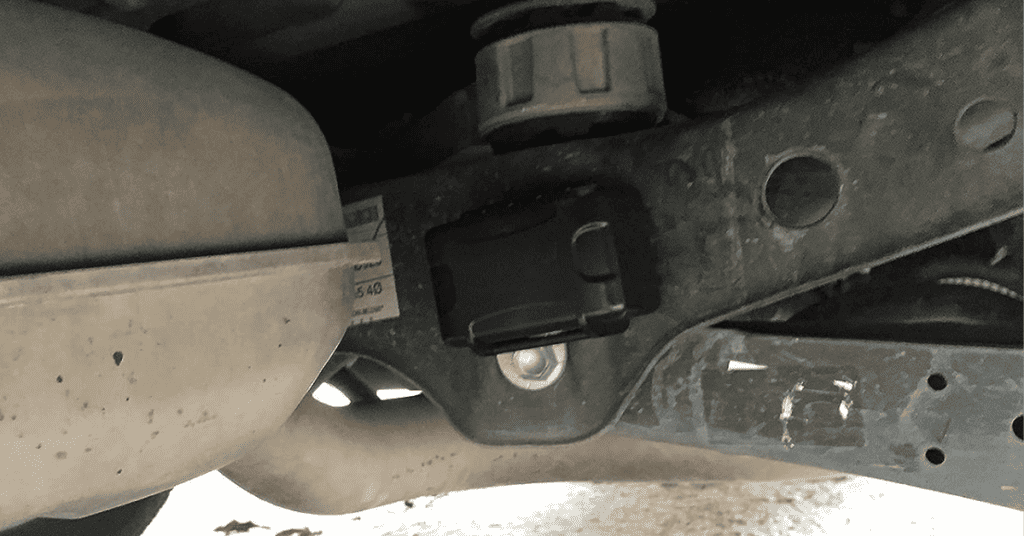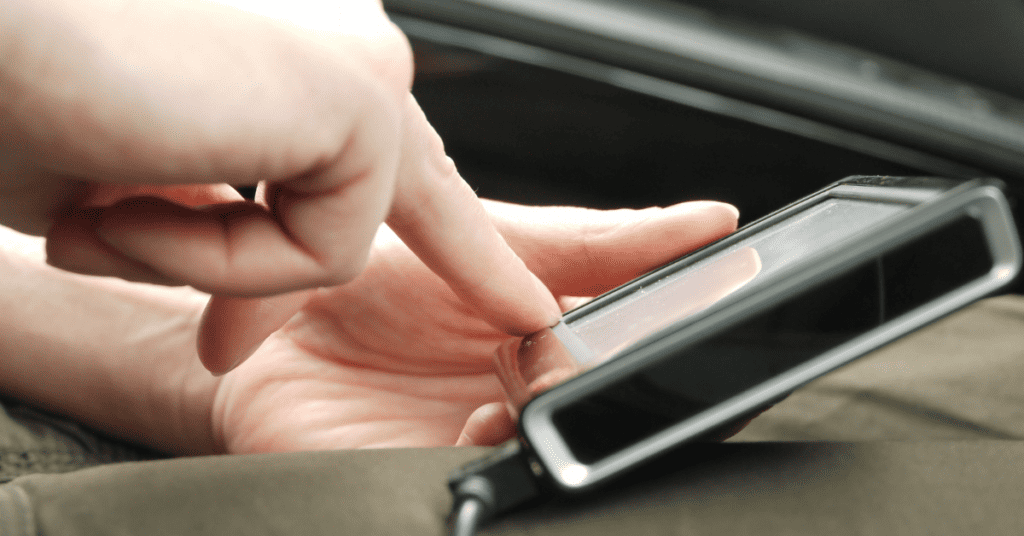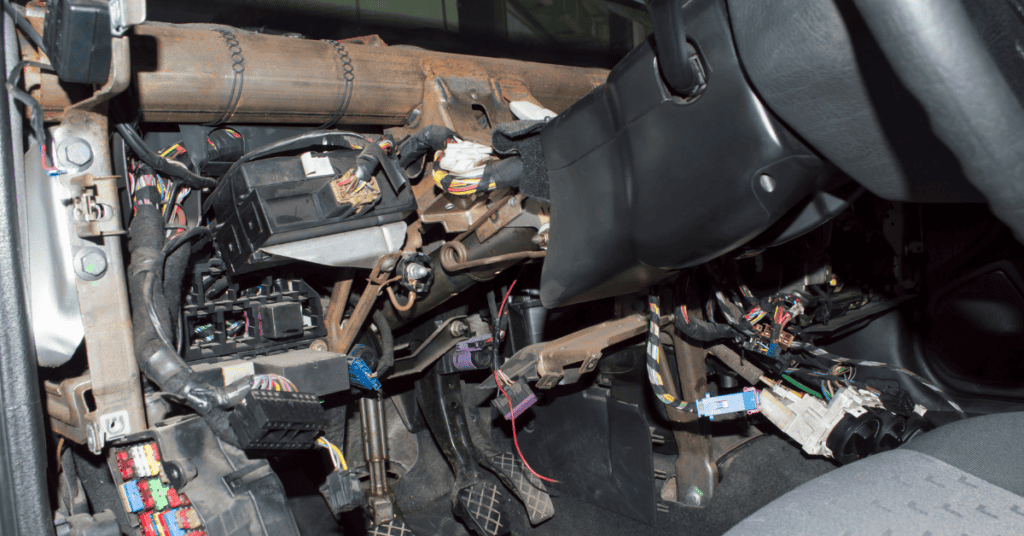The global positioning system (GPS) enables the car driver to control the vehicle’s movement, maintenance, and speed. Modern-day cars are no good without a GPS navigation system.
However, often car owners remove a GPS tracking device from their vehicles to replace or update it. Sometimes, they remove a tracking device that someone has discreetly planted in the car to monitor their movement.
Whatever the reason, expect a detailed discussion on the types of GPS models used in cars and their installing and dismantling procedures in this article.
Types of GPS Trackers in Car
Software technology has taken the world by storm. GPS is no longer a luxury but a necessity enabling the automobile industry to accomplish a task or reach locations within a stipulated time. In addition, the vehicular tracking system allows the car owner or driver to locate the car, protect it from theft, and, most importantly, increase productivity.
There are diverse types of GPS trackers available that serve varied purposes. Here are a few basic GPS types that cars possess, with steps on removing them:
1. Magnetic Tracker

Magnetic GPS devices are the most popular among the vast range of tracking systems used in cars. That’s because they are wireless, and the mechanic installs them in the car using a magnet.
Magnet GPS trackers are small in size and run on an in-built battery. That’s because they don’t have a wiring system, and this arrangement allows the car owner to install magnet GPS at any convenient place without professional help.
You can place them in hidden compartments or boxes, like the chassis or the seat. To attach the magnet tracker, consider putting it under the car or inside the wheel for a more discreet position.
In addition, car owners prefer GPS magnetic trackers over other tracking devices because they’re safer than OBD (onboard diagnostics) or wiring GPS devices. Some magnetic trackers work at a designated time and are highly flexible while operating.
Given their easy installation feature, magnet trackers have less chance of being detected or disabled by external agents.
If you want to remove the GPS from the car, note that its disabling method is equally straightforward. Detach the magnet tracker from its place, and the GPS will stop locating your vehicle.
2. Hardwired GPS Tracker
GPS trackers that have a wired-in arrangement and extract energy from the car engine are hardwired. These types of tracking devices are the most complicated to install, given their complex wiring system.
Despite the arranging complexity, many business professionals prefer hardwired GPS tracking systems over others. These GPS devices don’t require recharging after every definite interval.
They’re inaccessible to outside interference. You can attach them discreetly without anybody noticing, and they seamlessly work with any vehicle model.
Professionals from the shipment industry chose wired-in GPS trackers to locate their vehicles and personnel making cross-country deliveries. Hardwired GPS devices help them reduce fuel consumption, control travel expenditure, monitor the usage of various equipment, enhance customer service, and maintain meticulous billing records.
The intricate wiring system doesn’t allow removing the GPS device with ease. Remove the tracker device only with the help of a mechanic. They can uninstall the device without damaging the car and ensure its viability for future use.
However, its complex dismantling procedure makes it one of the safest GPS devices, especially since nobody can easily tamper with the tracking system.
Furthermore, the device has an antenna that signals the car operator whenever anybody tries to manipulate or hack into the machine. It can also switch off the vehicle’s ignition on sensing a security breach.
3. Plug and Play GPS Tracker

Plug and Play (PNP) GPS tracking device plugs into your car’s OBD II port beneath the car’s steering wheel. The OBD port helps service technicians run diagnostic codes. Thus, besides the vehicle’s position, the PNP trackers produce diagnostic reports.
Because of their plugging mechanism, you don’t need prior technical knowledge to install the PNP GPS device. You don’t have to worry about any intricate wiring system while attaching the tracker, and this easy-to-handle feature of the device is one of the primary benefits for customers.
In some cars, the OBD ports lie beside the car’s accelerator, where the driver places their legs. Such an arrangement near the pedals can make the car driver uncomfortable. In such situations, car operators often use OBD extension cords to position the PNP GPS tracking device in a more suitable place, like the dashboard.
You can easily remove the GPS from the car by locating the machine and then unplugging it. The tracker also has an internal battery and an antenna that signals the owner when the device is disabled.
How To Remove GPS From Car?
Removing a GPS tracking device can be easy if the car operator knows how to do it. The basic process is to locate the tracking device and carefully detach it from the car.
However, the method is more challenging than it sounds if the tracking device has wiring systems. The following steps will help you remove the tracking device from a car:
Step 1: Spot the GPS in the Car

The primary step to removing and disabling the tracking system from the device is to locate it. When you sense a security breach, you must secure the device before removing it from the vehicle.
To identify whether something’s wrong with the tracking device, try the following signs:
- Check the dashboard and identify if anything’s out of place.
- Observe if additional electric tape or new wires are connecting existing cables
- Examine the thickness of the new colored wires, if added.
- Amidst these wires, identify the small and thick tracking box having two wires connecting to the ignition.
- The final step to finding the GPS is to remove it carefully without damaging the thin wires. Remove the tapes and zip them carefully around the tracker box. If you rush the dismantling process of the box, you might damage the car wires.
Step 2: Identify the Right Component
Wired-in tracking devices have an intertwining wire network. Choosing the correct wire component can be a challenge. Here’s how you know what the wires mean:
- Find the GPS antenna that connects to the top of the car. You can follow this wire to confirm and safely remove it to disable the tracking device.
- Next to the GPS antenna lies the GSM antenna.
- There’s a red-colored wire connecting to the ignition of the car. It allows the car to keep recharging and gaining power from its engine. Possibly there are two relay wires connecting to the ignition.
Step 3: Remove the GPS Device From the Car

The last step to GPS dismantling gets easier once you’ve accomplished the earlier two steps. Detach the antenna from the receiver by pulling the GPS antenna from its connecting point.
Once the user has removed the GPS tracking device from the car, they should carefully restore all ignition wires. That way, the car returns to its active situation.
Additional Ways To Remove GPS Tracker From Vehicle
Here are four additional ways you can remove the GPS tracker from the vehicle:
1. Sweep With a Bug Detector
Invest in quality electric sweepers that can catch electromagnetic waves and detect hidden GPS trackers. If the sweeper vibrates and emits a beeping sound, it indicates that the GPS tracker is present. Even if it’s intricately hidden, a GPS tracker detector can help you find and remove them.
2. Scan the Car Exterior
Modern GPS trackers can be attached to the exterior part of the car’s body. Mainly since hardly any of them require a wiring system these days. Check for hidden tracking devices with the help of a flashlight and a mirror.
Professionals resort to this scanning method of finding and removing GPS tracking devices during confidential meetings. They sweep the car’s underside and the wheel wells and finally check the engine to track the GPS device.
3. Check Inside the Car

Someone can install the GPS tracking device in the car’s interior. They can have a wiring arrangement or a magnetic feature connecting the device to the car’s body.
Security professionals suggest you begin your search by checking the plugs near the dashboard and close to the accelerator. These are the most likely places where anyone can install a real-time GPS without you knowing.
Once done checking the interior manually, use the flashlight and mirror to sweep the car inside. Focus on areas like the underside of the car seat, inside the glass box, the center console, and the various storage compartments. Lastly, sweep the trunk of the car to find tracking devices.
4. Hire a Professional Mechanic
Despite all the trials, if you cannot detect and remove the positioning device, consider seeking professional help. Call for an experienced mechanic with prior knowledge of the possible spots where a GPS tracker could be installed.
Most importantly, a particular type of tracking device is often intricately wired to the electronic circuit of the car. You might make mistakes pulling the wires while removing the device from the vehicle. A mechanic knows how to remove the device by safely detaching the red and black wires from the car’s ignition wiring and causing no harm to the car’s internal working network.
Things To Remember Before Removing GPS Tracker From Car
Removing a GPS tracker from a car is a challenging and delicate task where the mechanic requires prior experience and deep knowledge. Remember, if they pull the wrong wire, it can damage the car entirely. Here are a few of the things the mechanic or the operator should consider before removing the GPS tracker from the car:
1. Proper Precautions
When a mechanic removes the positioning tracker from the car under your watch, consider taking some precautionary steps. For instance, check with the local laws if it’s appropriate to disable or remove the GPS tracker from the car.
Secondly, remember to take photographs of the tracking device before you remove them. It’s necessary if you need to reinstall a tracking device in the same place in the future.
2. Right Tools
Removal of the tracking device requires suitable tools like pliers and screwdrivers. In addition, you should follow the mechanic’s guide to remove the GPS tracker. Otherwise, a minor mistake can destroy the tracking device’s and car’s interconnected wiring system.
3. Disconnect the Power Service

Before you disable the tracking machine, ensure you have disconnected the power service. Removing the tracking device without disconnecting the power service can damage the electric circuit of the car.
4. Proper GPS Disposal
After removing the GPS tracking device, make sure you dispose of the tracking device in a way that doesn’t adversely affect the environment. Also, with careful removal, you can reinstall and re-use the same tracking system in the future.
Frequently Asked Questions
Here are some popular queries that car users often ask:
Yes, you can remove the GPS from the car. Magnet and Plug and Play tracking devices are easy to dismantle. In contrast to plug-in and magnet GPS tracking devices, Hardwired GPS is troublesome to detach because of its complex wiring. In this case, you must seek professional help.
When you disconnect the GPS tracker from the car, it stops tracing your car’s whereabouts. Moreover, you won’t know when anyone tries to tamper with or manipulate the car.
Yes, a mechanic can remove a GPS tracker. Let a mechanic handle the dismantling procedure if you want to uninstall a hardwired tracking device. That way, you won’t damage the car wires.
Place the GPS monitor inside a metal container. The device will absorb its inbound and outgoing signals and immediately stop working.
Not all cars have GPS, and it isn’t a mandate by law. Therefore, you can install, remove, or back the GPS tracking device according to your wish.
Conclusion
Installing and removing a GPS tracking device from the car requires precision and technical knowledge. They attract risks like damaging the vehicle, security dangers, and communication problems. However, removing the tracking device is essential if the car operator needs to update or replace the existing one.

Stefan Quartemont is an experienced author and expert on GPS technology, with a particular interest in its practical applications. He gained his knowledge of GPS tracking during his studies at Texas A&M University and has since become a regular contributor to TraxFamily.com, providing valuable insights into the latest developments in GPS tracking. Stefan’s expertise and passion for leadership make him a respected authority on GPS technology, and his work with TraxFamily.com is highly beneficial to anyone interested in staying up-to-date on this exciting technology.
